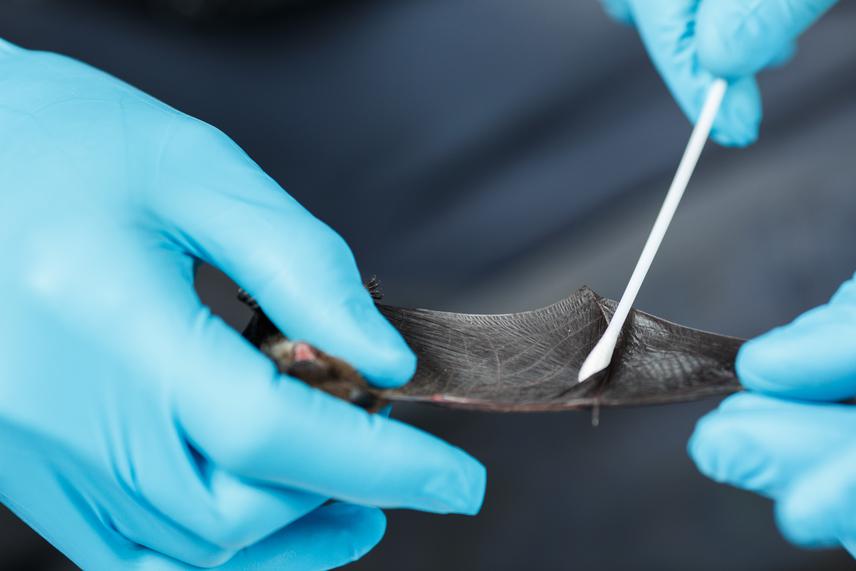Article featuring the project on Patagon Journal
Gonzalo Ossa
Other projects
12 Apr 2016
The Next Frontier for White-Nose Syndrome: Identifying High-Risk Species and High-Impact Management Practices in South America
After the first Rufford Small Grant, we suggested that WNS is absent in Chile, and bats are therefore vulnerable to dramatic population declines should WNS arrive. The contribution of this work will be to describe environmental conditions relevant to the growth of Pseudogymnoascus destructans (Pd), inside bat roosts, potential hibernacula, and commercial tourist caves in Chile. This will allow us to assess the likelihood of Pd expansion, and to identify habitats and locations where Pd is likely to spread into Chile and proliferate.
Identifying these habitats and locations will be critical for conservation efforts because it will provide target areas for management recommendations. Furthermore, our project will describe the environmental conditions inside bat roosts and hibernacula. By studying caves and mines, as well as potentially suitable hibernacula such as trees and rock outcrops, our work will help determine where Chilean bats hibernate in regions where caves and mines are absent.

Swabbing a Myotis chiloensis to collect DNA of micro-flora and fauna on the wings, and later screening for the presence of the white-nose syndrome fungus.
Data will be collected at ten sites throughout Chile. Study locations will focus on tourist caves, where Pd is mostly likely to arrive on human visitors and other large caves and mines that are still likely to be used by bats. Currently identified sites include latitudes from 51°S to 18°S. In addition to these more traditional hibernation sites, we will also deploy data loggers in trees and rock slopes identified as spring roosts, as we speculate that some of these roosts may also serve as hibernacula.
We will place HOBO ProV2 temperature and humidity loggers inside identified day and hibernation roosts during the austral summer. When programmed to measure and record environmental conditions at 30 minute intervals, these units will operate for an entire year on a single battery and will not need service between deployment and removal and offloading of recorded data. Thus, loggers will be deployed for a whole calendar year to map the whole range of environmental conditions at a site. Depending on the size of the site, one or more units will be installed to capture differences in microclimate conditions within the roost.
Upon retrieval, data will be seasonally summarized in terms of daily average, minimum, maximum, and variance in temperature. These data will give us information on the suitability of these sites to bats during the Austral winter, but more importantly, to the potential year-round survival of Pd at these sites even in the absence of bats. Using previously published information on environmental condition favoured by Pd, we can assess the suitability of these sites for the fungus. The suitability of each study site, along with information on human use, will be used to determine how likely Pd is to be accidentally transported to these sites by humans. Prevention measures that can be taken to limit the likelihood of Pd transport into each site will be provided to each landowner. Finally, data collected from traditional hibernacula will be compared to day roosts we identified in 2016 to determine the suitability of day-roosts as hibernacula.
We will also continue to ensure that Pd and WNS is absent from Chile during our work. All sites will also be swabbed for Pd with dry cotton swabs. The swabs are stored in 1.5 ml vials at -20 C and extracted using a Qiagen QIAmp microkit and the presence and quantity of Pd will be determined with qPCR.